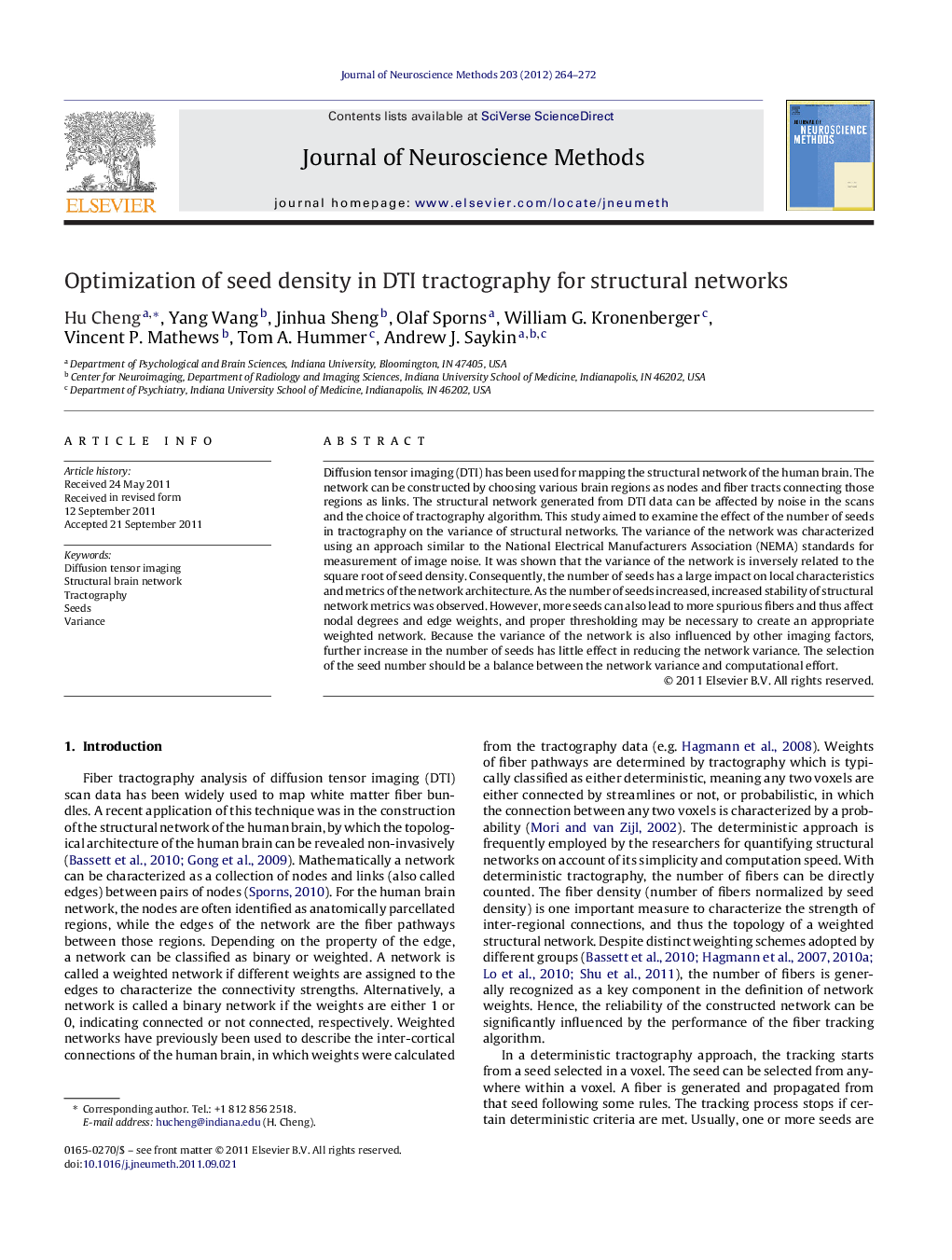| Article ID | Journal | Published Year | Pages | File Type |
|---|---|---|---|---|
| 6269229 | Journal of Neuroscience Methods | 2012 | 9 Pages |
Diffusion tensor imaging (DTI) has been used for mapping the structural network of the human brain. The network can be constructed by choosing various brain regions as nodes and fiber tracts connecting those regions as links. The structural network generated from DTI data can be affected by noise in the scans and the choice of tractography algorithm. This study aimed to examine the effect of the number of seeds in tractography on the variance of structural networks. The variance of the network was characterized using an approach similar to the National Electrical Manufacturers Association (NEMA) standards for measurement of image noise. It was shown that the variance of the network is inversely related to the square root of seed density. Consequently, the number of seeds has a large impact on local characteristics and metrics of the network architecture. As the number of seeds increased, increased stability of structural network metrics was observed. However, more seeds can also lead to more spurious fibers and thus affect nodal degrees and edge weights, and proper thresholding may be necessary to create an appropriate weighted network. Because the variance of the network is also influenced by other imaging factors, further increase in the number of seeds has little effect in reducing the network variance. The selection of the seed number should be a balance between the network variance and computational effort.
⺠We investigated the effect of seed density in fiber tracking on the variance of constructed structural network. ⺠We found that variance of network and local metrics can be significantly reduced by increasing number of seeds per voxel from 1 to 10. ⺠Further increasing of seeds has little effect. ⺠An optimal way of choosing number of seeds was proposed by considering other sources of variance.
